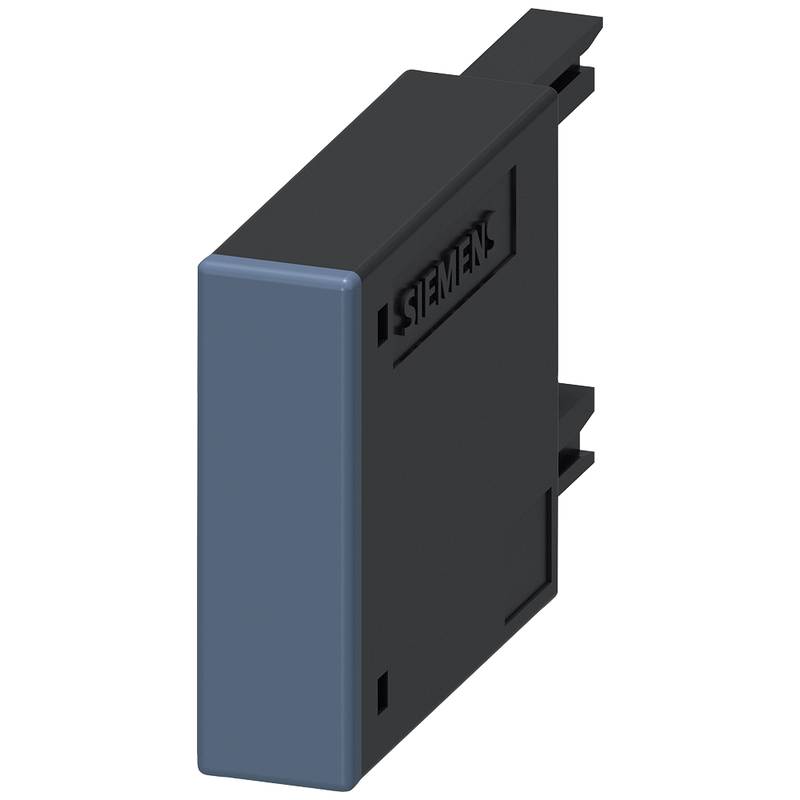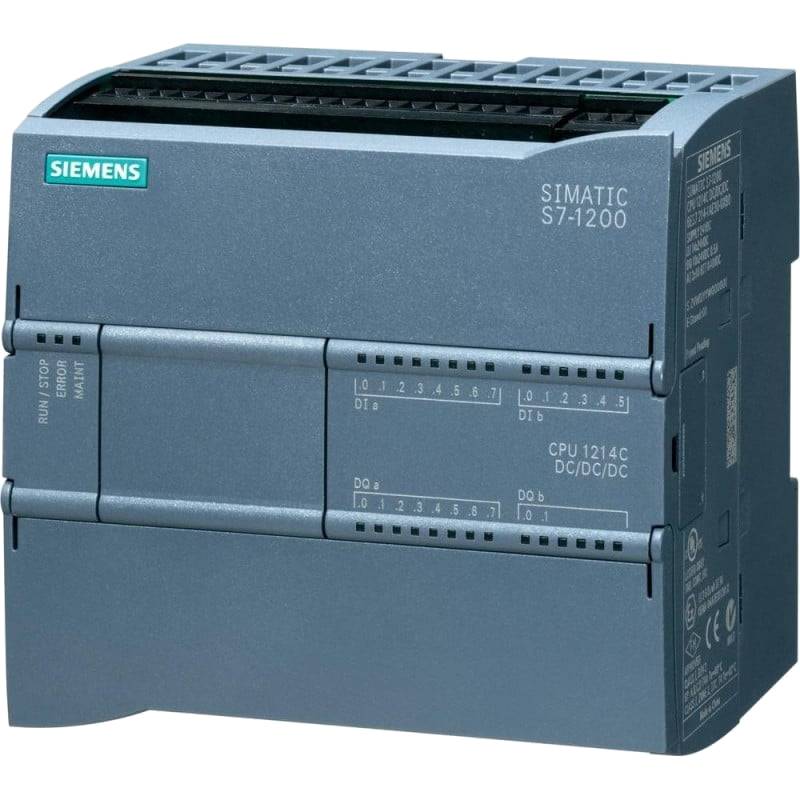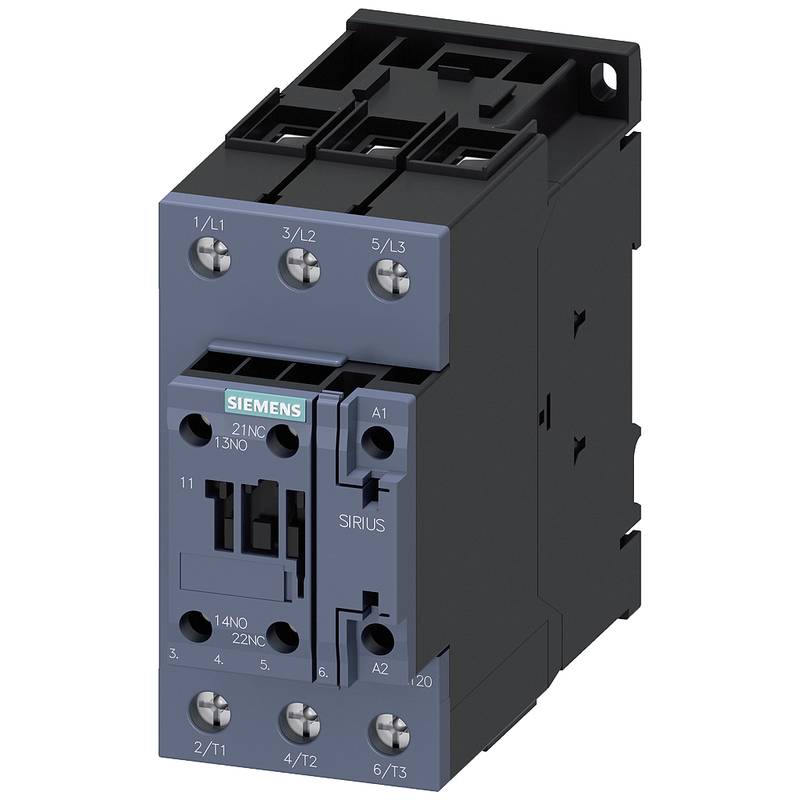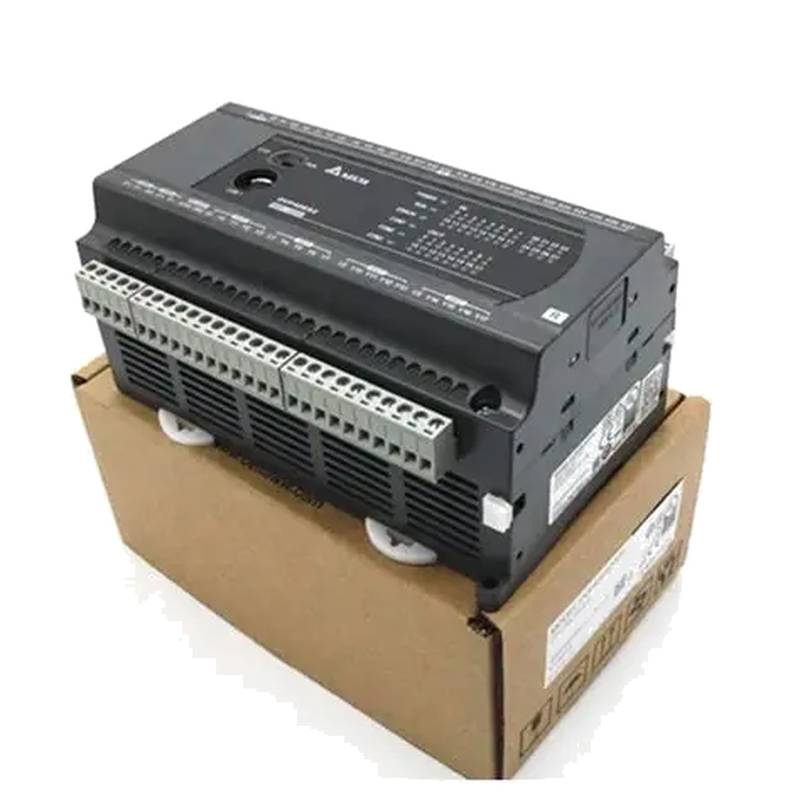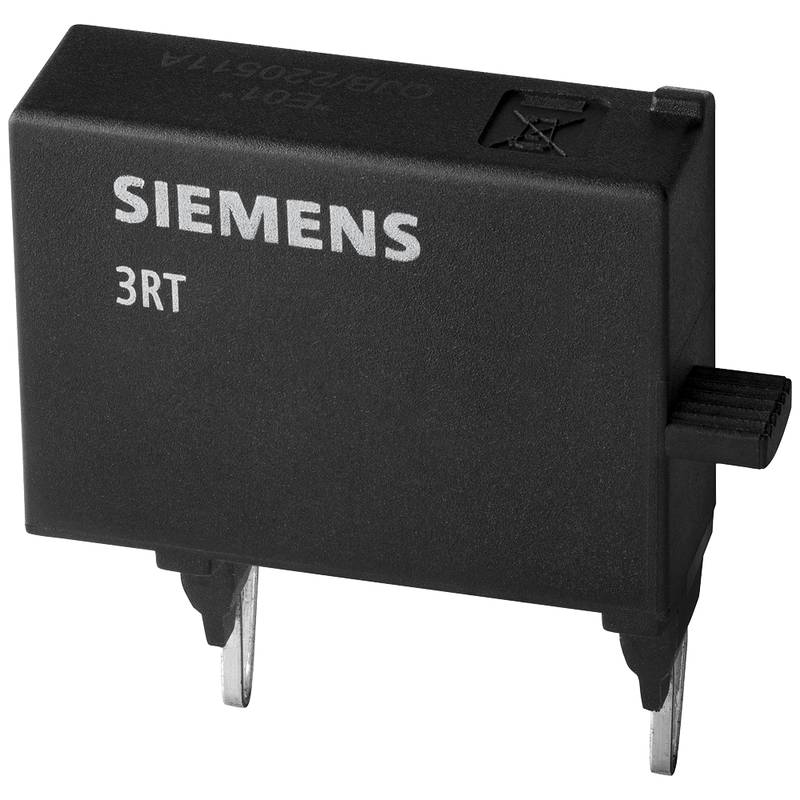
The Siemens 3RT6015-1KB41 is a vital component in modern automation systems, offering reliable time delay control for a variety of industrial applications. This 24VDC contactor, rated for 7A with three normally open (NO) contacts, provides precise timing functions crucial for sequential operations and process control. Its compact design and robust construction ensure dependable performance in demanding environments, making it a preferred choice for engineers seeking efficiency and longevity.
Product Specifications
| Feature | Specification |
| :------------------- | :--------------------------------------------- |
| Product Type | Time Delay Automation Control Contactor |
| Manufacturer | Siemens |
| Model Number | 3RT6015-1KB41 |
| Coil Voltage | 24V DC |
| Current Rating | 7A |
| Number of NO Contacts| 3 |
| Auxiliary Contacts | Typically integrated or combinable |
| Mounting Type | DIN rail or screw mounting |
| Protection Class | IP20 (finger-safe) |
| Operating Temperature| -25°C to +60°C |
| Standards Compliance | IEC 60947, VDE 0660 |
Core Features & Market Positioning
The Siemens 3RT6015-1KB41 distinguishes itself through its integrated time delay functionality, a feature often requiring separate components in conventional setups. This consolidation simplifies panel design and reduces wiring complexity, a significant advantage in cost-sensitive and space-constrained industrial automation projects. Its 24VDC coil voltage is standard for many control systems, ensuring broad compatibility. The 7A rating is suitable for a range of medium-duty control circuits, including motor starters, lighting control, and various solenoid valve operations. Siemens' reputation for quality and reliability further solidifies the 3RT6015-1KB41's market position as a dependable solution for critical automation tasks where consistent performance is paramount.
Key Application Scenarios
This time delay contactor finds extensive use in manufacturing, material handling, and process control environments. It is ideal for applications requiring delayed activation of machinery, such as phased motor starting sequences to reduce inrush current or to implement specific operational delays in conveyor systems. In building automation, it can manage HVAC system sequences or lighting controls with timed responses. Furthermore, it's employed in automated assembly lines for precise control of actuators and pneumatic valves, ensuring that processes occur in the correct order and at the appropriate times. The 3RT6015-1KB41 is well-suited for any scenario where a controlled delay is a critical parameter for operational success.
Practical System Integration Guidance
Integrating the Siemens 3RT6015-1KB41 into an existing control system is straightforward, leveraging standard industrial wiring practices. Power for the 24VDC coil is typically supplied from a central control power supply, connected to terminals A1 and A2. The three normally open (NO) power contacts (1, 3, 5 and 2, 4, 6) are wired in series with the load being controlled. For time delay functionality, an appropriate timer module or function block within a PLC often dictates the energization of the contactor coil. Ensure proper termination and strain relief for all wiring to maintain electrical integrity and safety, adhering to local electrical codes and standards.
Operation and Risk Mitigation
The Siemens 3RT6015-1KB41 operates by energizing its coil, which then magnetically actuates the internal contacts. The time delay function is typically managed externally by the control system; the contactor itself provides the switching capability once its coil is energized for the specified duration. To mitigate risks, always ensure the power supply matches the 24VDC coil requirement and that the 7A rating is not exceeded by the connected load. Proper grounding and enclosure of the unit are essential for operator safety and to prevent ingress of dust or moisture, which could compromise operation. If the contactor fails to operate or chatters, check coil voltage and connections first.
Scalability & Long-Term Value
The Siemens 3RT6015-1KB41 offers excellent long-term value due to its robust design and compatibility with the broader Siemens automation portfolio. While this specific unit provides a fixed function, its integration into a PLC-controlled system allows for flexibility in modifying timing parameters via software, effectively scaling the application's behavior without hardware changes. The 3RT series is part of Siemens' commitment to industrial digitalization, meaning these contactors can be part of larger IIoT-enabled systems, providing data for monitoring and predictive maintenance. Upgrading system complexity often involves adding more of these contactors or using them in conjunction with more advanced Siemens controllers and I/O modules.
Frequently Asked Questions
What is the purpose of a time delay contactor like the Siemens 3RT6015-1KB41?
A time delay contactor, such as the Siemens 3RT6015-1KB41, serves to switch electrical circuits after a predetermined time interval. This is crucial for sequencing operations in industrial automation, preventing sudden power surges, or controlling processes that require specific timing.
The 3RT6015-1KB41 specifically delays the activation of its main power contacts once its 24VDC coil is energized. This allows for controlled startup sequences for motors or phased activation of equipment. It's a key component for automating complex machinery and processes.
By integrating timing directly or indirectly through the control system, these contactors simplify wiring and reduce the need for separate timer relays, thus saving space and installation costs in control panels.
How do I wire the Siemens 3RT6015-1KB41 for a 24VDC control circuit?
Wiring the Siemens 3RT6015-1KB41 involves connecting the 24VDC power source to the coil terminals, typically labeled A1 and A2. Ensure correct polarity if your DC supply is sensitive to it, though many contactor coils are not.
The main power contacts, usually numbered 1, 3, 5 for line side and 2, 4, 6 for load side (all normally open in this model), are wired in series with the device or load you intend to control. For example, to control a motor starter coil, you would place the 3RT6015-1KB41 contacts in the path of the motor starter's control voltage.
Always consult the specific wiring diagram provided with the product or available from Siemens for your exact application. Ensure all connections are secure, and the wiring gauge is appropriate for the current being switched and the control circuit.
What are the typical applications for a 7A, 3NO contactor with time delay functionality?
This type of contactor is widely used for sequential motor control, where a delay is needed before a motor starts, perhaps to manage power load or synchronize with other equipment. It's also applicable in material handling systems, like conveyor belts, to control starting and stopping sequences with specific delays.
In process automation, it can be used to control pumps, fans, or valves that require a timed activation or deactivation. This includes applications in HVAC systems, water treatment plants, or chemical processing lines where precise operational timing is essential for efficiency and safety.
Another common use is in lighting control systems, where delayed switching can prevent simultaneous energization of multiple circuits, or in automated test equipment where specific timing is part of the testing procedure.
Can the Siemens 3RT6015-1KB41 be used with AC loads, or is it strictly for DC?
The Siemens 3RT6015-1KB41 is specified with a 24VDC coil voltage. While the coil operates on DC, the main power contacts are typically designed to switch either AC or DC loads within their specified ratings, but it's crucial to verify the exact contact rating for AC and DC switching.
For this particular model, the 7A rating is generally applicable to AC loads like motors or lighting circuits. However, if intended for DC loads, the allowable DC voltage and current rating might differ significantly due to arc suppression challenges. Always check the product datasheet for specific AC and DC switching capabilities of the contacts.
It is paramount to ensure the load's voltage and current do not exceed the contactor's capabilities, whether AC or DC. Using it with an AC coil voltage when it's designed for DC, or vice versa, will result in malfunction or damage.
What causes a Siemens time delay contactor to fail or not operate correctly?
Common causes for failure include incorrect coil voltage; the 3RT6015-1KB41 requires a stable 24VDC supply. Overloading the contacts beyond the 7A rating will lead to premature wear or welding of the contacts, preventing proper operation or causing them to stick.
Physical damage, such as cracked casings or broken internal components, can occur due to improper installation, severe shock, or environmental factors like excessive moisture or vibration. Dust accumulation on contacts can also impede conductivity.
Internal coil failure or wear and tear over many switching cycles can lead to the contactor not energizing or de-energizing as expected. Furthermore, if the timing function is controlled by an external source (like a PLC), issues with that control signal or timer logic will directly affect the contactor's perceived operation.
How does the time delay function work in the Siemens 3RT6015-1KB41?
The Siemens 3RT6015-1KB41 is a contactor with an integrated time delay functionality, meaning the delay is inherent in its operation upon coil energization. This is different from standard contactors that switch instantaneously.
When the 24VDC coil is energized, an internal timer mechanism begins counting. After the preset time elapses, the normally open (NO) contacts close, allowing current to flow to the controlled circuit. The duration of this delay is often adjustable via a dial or setting on the contactor itself, or programmed externally if integrated with a PLC.
The specific time delay mechanism (e.g., electronic, pneumatic) depends on the exact variant, but for modern electronic timers, it offers precise and repeatable delays critical for automation. Upon de-energization of the coil, the contacts usually reset instantly to their default state.
What is the difference between a standard Siemens contactor and a time delay contactor like the 3RT6015-1KB41?
A standard Siemens contactor, such as those in the 3RT series without a specific time delay designation, switches its main power contacts almost instantaneously when the coil is energized or de-energized. They are designed purely for power switching.
The 3RT6015-1KB41, however, incorporates a time delay feature. This means that upon receiving the control signal (energizing the 24VDC coil), there is a deliberate, measurable delay before the contacts close and complete the power circuit. This delay is a core function of the device.
This distinction is critical for applications requiring sequential operation. Standard contactors are for immediate switching, while time delay contactors are for controlled, delayed switching, enabling more complex automation sequences.
Where can I find the datasheet or technical manual for the Siemens 3RT6015-1KB41?
The most reliable source for the datasheet and technical manual for the Siemens 3RT6015-1KB41 is the official Siemens Industry Online Support (SIOS) portal. You can access this via a web browser by searching for "Siemens SIOS" and then using the product number "3RT6015-1KB41" in the search function.
Alternatively, many authorized Siemens distributors and electrical component suppliers will have links to product datasheets on their websites. Searching for the product number along with "datasheet" or "manual" on a search engine will often yield direct links from these reputable sources.
Always ensure you are downloading documentation directly from Siemens or a verified distributor to guarantee accuracy and completeness. This documentation will contain detailed specifications, wiring diagrams, and operational guidelines.
What safety precautions should be taken when installing or servicing the 3RT6015-1KB41?
Always de-energize all power sources to the control panel and the specific circuit before commencing any installation or maintenance work. Verify that the circuit is dead using appropriate voltage testing equipment.
Wear personal protective equipment (PPE), including safety glasses and insulated gloves, as standard practice when working with electrical equipment. Ensure proper grounding of the enclosure and the contactor if required by the installation guidelines to prevent electrical shock hazards.
Follow lockout/tagout procedures diligently to prevent accidental re-energization. If unsure about any aspect of the installation or servicing, consult a qualified electrician or refer to the official Siemens installation manual for detailed safety instructions.
Can this contactor be integrated with a PLC for advanced control?
Yes, the Siemens 3RT6015-1KB41 is designed to be readily integrated with Programmable Logic Controllers (PLCs). The 24VDC coil voltage is a standard control voltage for most PLCs, allowing for direct or indirect control via PLC outputs.
By using a PLC, you gain the flexibility to program the timing sequences, control multiple contactors simultaneously, and incorporate complex logic. This transforms the simple time delay function into a dynamic part of a larger automated system, offering advanced capabilities beyond a fixed-time delay.
The PLC can signal the contactor coil to energize, and the PLC's internal timer or sequential function chart can manage the exact delay duration, offering greater precision and adaptability compared to a standalone timer relay.

















